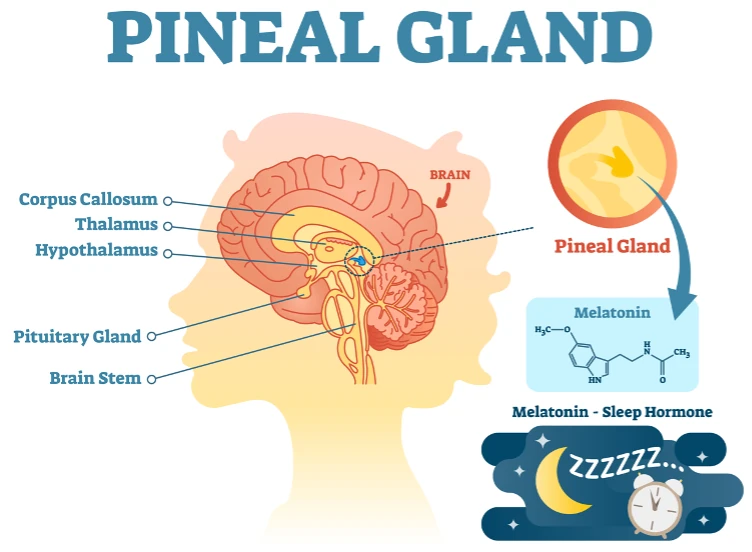Insomnia is a common sleep disorder that affects millions of individuals worldwide. It can be classified into acute and chronic forms, with acute insomnia lasting for a short duration due to stress or life events. In contrast, chronic insomnia persists for months or longer. Additionally, insomnia can be categorised based on difficulty falling asleep (sleep-onset insomnia) or staying asleep (sleep-maintenance insomnia).
Eszopiclone is a prescription medication which is licensed for the treatment of insomnia. It has recently become available in the UK, where it is known by its brand name, Lunivia. Eszopiclone is also known as Lunivia in Europe and Japan. Eszopiclone has been available in the USA since 2004, where it is known as Lunesta.
It is classified as a non-benzodiazepine hypnotic and is specifically prescribed to help individuals who struggle with falling and staying asleep. This article provides a comprehensive overview of Lunesta, including its uses, benefits, risks, and alternatives, to help individuals make informed decisions about their sleep health. This article is for informational purposes only and does not constitute medical advice. Individuals should consult a qualified healthcare provider before deciding on their sleep treatment.
What is Lunesta (eszopiclone)?
Lunesta (eszopiclone) is a prescription medication classified as a non-benzodiazepine hypnotic, commonly known as a “Z-drug.” These medications are specifically designed to treat insomnia by promoting sleep onset and maintenance. Unlike benzodiazepines, which have a broader effect on the central nervous system, Lunesta primarily targets sleep-related neurotransmitters, making it a preferred choice for individuals with difficulty falling or staying asleep. Due to its potential for dependence, Lunesta is typically prescribed for short-term use and should be taken under the supervision of a healthcare provider.
How is Lunesta different from zopiclone?
Lunesta (eszopiclone) is a mirror image form of another Z-drug called zopiclone. Mirror image molecules are known as enantiomers. Enantiomers are associated with a number of clinical benefits, including greater potency (referred to as efficacy) which allows for lower dosing. For example, the maximum dose of Lunesta is 3mg, whereas the maximum dose of zopiclone is 7.5mg.
Mechanism of action
Eszopiclone, the active ingredient in Lunesta, belongs to the class of hypnotic medications that work by slowing down brain activity to facilitate sleep. It enhances the function of gamma-aminobutyric acid (GABA), the brain’s primary inhibitory neurotransmitter. By binding to specific receptors in the brain, Lunesta increases the calming effects of GABA, reducing neural excitability and allowing the body to transition into sleep more easily. This targeted action differentiates it from other sedative medications that may have more potent sedative properties and higher risks of dependency or residual drowsiness.
Neurotransmitters involved in sleep
Neurotransmitters’ role in sleep regulation is crucial, and Lunesta primarily affects GABAergic transmission. GABA reduces neuronal activity, helping the brain enter a relaxed state necessary for sleep. Additionally, the medication may indirectly affect neurotransmitters, such as serotonin and dopamine, contributing to sleep regulation and mood stability. By modulating these neurochemical pathways, Lunesta improves sleep efficiency without significantly altering sleep architecture.
Dosage and administration
Lunesta is available in tablet form with 1 mg, 2 mg, and 3 mg. The dosage depends on the severity of the insomnia, the patient’s age and response to the medication. A lower dose is recommended to minimise potential side effects, with adjustments made based on treatment effectiveness. Since Lunesta has a rapid onset of action, it should be taken immediately before bedtime to ensure optimal results while minimising the risk of next-day drowsiness or impairment.
How does Lunesta work?
Lunesta works by interacting with neurotransmitters in the brain to promote sleep. Its mechanism allows individuals to fall asleep faster and maintain sleep throughout the night, improving overall sleep quality.
Onset of action
Lunesta typically begins to work within 30 minutes after ingestion, making it effective for individuals with sleep-onset insomnia. The medication reaches its peak concentration within one hour in the bloodstream, ensuring rapid absorption and effectiveness. Its mechanism allows users to fall asleep more quickly and reduces the time spent trying to initiate sleep, offering relief to those who struggle with prolonged wakefulness at bedtime.
Duration of effects
The effects of Lunesta can last between six to eight hours, making it particularly beneficial for individuals experiencing sleep-maintenance insomnia, characterised by frequent nighttime awakenings. Promoting sustained sleep enhances sleep continuity and allows individuals to complete an entire sleep cycle. However, due to its relatively long half-life, some individuals may experience residual drowsiness or grogginess the following morning, especially if taken at higher doses or without sufficient sleep duration. The average half-life of Lunesta is around six hours, although the half-life can increase to nine hours in patients aged 65 years or older.
Comparison to other sleep medications
Unlike some sleep medications that primarily act as sedatives, Lunesta modulates sleep-related neurotransmitters to regulate the sleep-wake cycle. This sets it apart from other sleep aids, such as antihistamines, which induce drowsiness but do not actively support normal sleep architecture. Lunesta helps to restore natural sleep patterns without excessive sedation by targeting neurotransmitters in sleep regulation.
Safety and considerations
Lunesta’s selective interaction with GABA receptors distinguishes it from older sedative-hypnotics, offering an option with potentially fewer side effects related to cognitive impairment or next-day drowsiness. It improves the quality of sleep and is effective for treating insomnia. Its use must be carefully managed to minimise the risk of dependence and withdrawal symptoms. Healthcare providers generally prescribe Lunesta for short-term use, with periodic evaluations to ensure its continued safety and effectiveness.
Who is Lunesta for?
Lunesta is a prescription medication primarily indicated for individuals experiencing persistent insomnia. It is recommended for those who struggle with falling asleep, maintaining sleep, or waking up too early, significantly impacting their daily functioning. Before considering Lunesta, healthcare providers typically assess whether non-pharmacological interventions, such as cognitive behavioural therapy for insomnia (CBT-I) or lifestyle modifications, have been ineffective.
Types of insomnia treated with Lunesta
Lunesta is an effective treatment option for various types of insomnia, including sleep-onset insomnia, where individuals struggle to fall asleep despite a conducive sleep environment; sleep-maintenance insomnia, characterised by frequent nighttime awakenings and fragmented sleep; and chronic insomnia, which involves long-term sleep difficulties lasting several weeks or months. While the medication is generally intended for short-term use, healthcare providers may prescribe it for extended periods under careful supervision to manage persistent sleep issues effectively.
Limitations and special precautions
Lunesta is not appropriate for everyone and should be used with caution in certain individuals, including those with:
- Respiratory disorders: Not recommended for individuals with conditions like sleep apnoea or COPD due to potential respiratory suppression.
- Liver impairment: Reduced metabolism in liver disease may increase the risk of side effects.
- History of substance abuse: There is a higher risk of dependence in individuals with past drug or alcohol addiction.
- Pregnancy and breast-feeding: Potential risks to fetal development and infant exposure through breast milk.
- Renal impairment: the maximum recommended dose for people with kidney failure is 2mg.
- Elderly and psychiatric conditions: Increased sensitivity in older adults and possible worsening of depression or anxiety symptoms.
Before starting Lunesta, a thorough medical evaluation is essential to ensure its safety and appropriateness for each individual.
Benefits of Lunesta
Lunesta is effective in helping individuals fall asleep faster by reducing the time it takes to transition from wakefulness to sleep. Enhancing the activity of gamma-aminobutyric acid (GABA) promotes relaxation and decreases neural excitability, making it easier to initiate sleep. This is particularly beneficial for individuals with sleep-onset insomnia who struggle with prolonged wakefulness at bedtime. It improves sleep efficiency and is effective for treating insomnia.
In addition to aiding sleep initiation, Lunesta helps to reduce nighttime awakenings and prolongs overall sleep duration. Maintaining a stable sleep cycle enhances sleep continuity, allowing individuals to experience more profound and restorative sleep. This can improve sleep quality, essential for physical and mental well-being.
Consistently achieving sufficient, high-quality sleep with Lunesta can positively impact daytime functioning, mood, and cognitive performance. Improved rest can enhance concentration, memory, and overall alertness while reducing daytime fatigue and irritability. Lunesta contributes to better overall health and well-being by supporting a balanced sleep cycle.
Risks and side effects of Lunesta
Like all medications, Lunesta carries potential risks and side effects. Common side effects include an unusual taste in the mouth, often described as metallic or bitter, as well as dizziness, lightheadedness, drowsiness, next-day grogginess, and headaches. While less common, more serious side effects may also occur, such as memory impairment, confusion, complex sleep behaviours like sleepwalking, severe allergic reactions, hallucinations, or mood changes. It is important to use Lunesta as prescribed and consult a healthcare provider if any concerning side effects arise.
One significant concern with Lunesta is the potential for dependence, particularly with long-term use. It is classified as a controlled substance due to the possibility of misuse. Individuals may develop tolerance, requiring higher doses to achieve the same effect, and withdrawal symptoms can occur upon discontinuation. Rebound insomnia, where sleep problems return or worsen after stopping the medication, is another risk. To minimise these risks, Lunesta is typically prescribed for short-term use under careful medical supervision.
Alternatives to Lunesta
Before considering medications, individuals with insomnia are encouraged to explore non-drug alternatives, which can be highly effective in improving sleep. Cognitive behavioural therapy for Insomnia (CBT-I) is considered the gold standard for treating insomnia, as it addresses both behavioural and cognitive factors that contribute to poor sleep. Additionally, improving sleep hygiene, such as maintaining a consistent sleep schedule, reducing screen time before bed, and avoiding stimulants like caffeine, can significantly enhance sleep quality. Incorporating relaxation techniques, such as meditation, deep breathing exercises, and progressive muscle relaxation, can also promote better sleep by reducing stress and calming the mind. These approaches often provide long-term benefits without the need for medication.
For those who require medication but cannot take Lunesta, other prescription sleep aids may be considered, though a healthcare provider should determine the best option based on individual needs. Herbal remedies such as valerian root and melatonin supplements are also popular but should be used cautiously, as they are not regulated to the same degree as prescription medications.
How to take Lunesta safely
Lunesta should be taken precisely as a healthcare provider prescribes to ensure safe and effective use. The typical starting dose is 1 mg, taken once per night immediately before bedtime. Depending on how an individual responds to the medication, the dose may be increased to 2 mg or 3 mg. Taking Lunesta on an empty stomach is important, as food can delay absorption and reduce effectiveness. Taking the medication too early in the evening or while not fully prepared for sleep may lead to unwanted drowsiness the next day.
Safety precautions
Since Lunesta is a sedative-hypnotic, it can cause significant drowsiness. Individuals should avoid engaging in activities that require full alertness, such as driving, operating heavy machinery, or making critical decisions after taking the medication. Combining Lunesta with alcohol or other central nervous system (CNS) depressants, including certain pain medications and anti-anxiety drugs, can increase sedation and lead to serious side effects such as extreme drowsiness, confusion, breathing difficulties, and even unconsciousness. It is also essential to follow the prescribed dosage carefully, as taking higher doses than recommended can increase the risk of dependency or overdose.
Monitoring and discontinuation
Regular follow-up appointments with a healthcare provider are necessary to evaluate Lunesta’s effectiveness and manage any side effects. Long-term use should be carefully monitored, as tolerance, dependence, and withdrawal symptoms can develop. If discontinuation is necessary, the dose should be gradually reduced under medical supervision to prevent withdrawal effects such as anxiety, nausea, irritability, and rebound insomnia.
Considering Lunesta?
Lunesta can be an effective treatment for individuals struggling with insomnia, particularly for those who have not found success with non-drug approaches. It offers quicker sleep onset, improved maintenance, and enhanced daytime functioning. However, it also carries risks, including side effects, dependence, and withdrawal symptoms.
Before starting Lunesta, individuals should consult a healthcare provider to determine whether it is the right choice for their sleep needs. A comprehensive treatment plan that includes behavioural and lifestyle modifications alongside medication can provide the best outcomes for long-term sleep health.
If you’re experiencing sleep difficulties, scheduling a consultation with a sleep specialist can help to identify the root cause and provide the right treatment. Expert guidance ensures a personalised approach to improving sleep quality. Schedule a consultation with us to discuss your concerns and explore tailored treatment options. As a leading sleep specialist, Dr Mistry can help you achieve the restful and restorative sleep you deserve.










